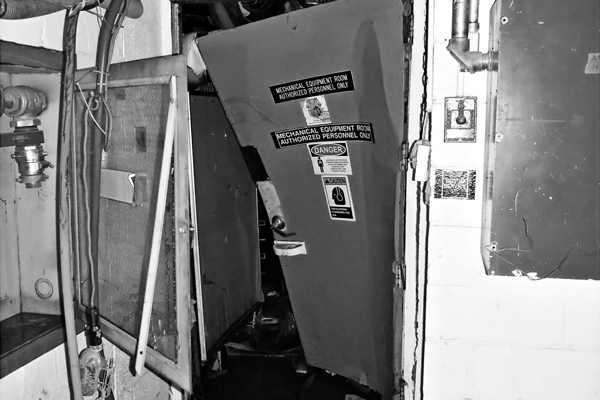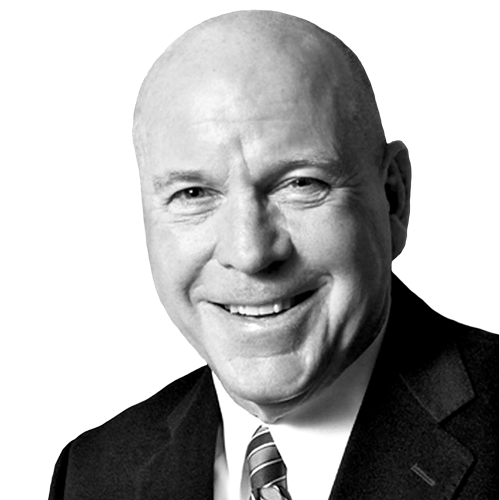
Mike Burke knew something had to be done. When it comes to adapting to the times, change is just a fact of life. And within the medical arena, Burke, who serves as senior vice president, vice dean, and corporate CFO at NYU Langone Medical Center, has embraced guiding the healthcare system’s financial team to improve its business function and profitability while staying ahead of the game.
During the past ten years, technology has dramatically changed how the healthcare industry does business. Technology advancements have driven hospitals and other healthcare organizations to reinvent themselves and their internal processes. Burke knows this too well. Since 2008, when Burke joined the team at NYU Langone, he has worked diligently to improve the credit rating of the medical center (including the medical school) and to initiate a financial turnaround that has allowed the leading-edge healthcare system to experience profitability once again.
That success is, in part, thanks to his wealth of extensive experience from other leading financial positions in such renowned medical establishments as Tufts Medical Center, in Boston, where he was senior vice president and chief financial officer; Duke University Hospital, in Durham, North Carolina, where he also worked as CFO; and KPMG’s healthcare consulting division, where he worked as a senior manager. But it was after Superstorm Sandy caused extensive damage at NYU Langone that Burke recognized the inherent need to get the medical center back on solid ground.
Many of the issues facing NYU Langone are about regulating healthcare costs while maintaining and controlling quality. Burke’s twenty years of experience have instilled in him a deep understanding of the effort it takes to make a healthcare system streamlined and profitable. But when there is a need for complete campus transformation as a result of nature’s wrath, managing profitability takes on a unique perspective.

Because of the extensive damage caused by the storm in October 2012, NYU Langone was reduced to limited operations for several months. One of the biggest impacts the storm had on the academic medical center was forcing it to close its full-service emergency department and rely solely on several off-site urgent-care centers. Closing an ED for more than eighteen months can wreak havoc on a medical center’s bottom line. In April 2014, NYU Langone opened a new, full-service emergency department and had treated more than 6,700 patients by May 31, 2014—adding a significant boost to the organization’s profitability. In addition, thanks to a FEMA grant, NYU Langone has turned its attention to rebuilding other areas that were destroyed by Superstorm Sandy in its medical school.
While being thankful for $1.13 billion in federal funds to help rebuild, Burke recognizes that the $400 million in lost revenue that NYU Langone incurred as a result of Sandy’s destruction may never be recovered. But it doesn’t mean Burke won’t continue to try. Rather, for Burke, managing risk, establishing a robust financial system, embracing new technologies, and ensuring future revenue streams are key tactics to turn NYU Langone Medical Center’s financial situation around. He has also upgraded the organization’s IT platform and has overseen the medical center’s ERP integration.
And his efforts have paid off. Only two years after Superstorm Sandy inflicted damage to the region and the medical center, the organization returned to profitability and has since maintained its bond rating while issuing new debt to complete the center’s campus transformation. Using a value-based management program, including recognizing unnecessary spending throughout the organization, Burke has helped NYU Langone reduce costs and improve profitability.
In addition, his prowess in all facets of financial management has meant that he has embraced many broad initiatives that NYU Langone has established in its facilities—from growth strategies in clinical areas to structural alignment and streamlined care management.
In a recent interview with Becker’s Hospital CFO, Burke stressed that focusing on a healthcare organization’s revenue system and clinical documentation is key to maintaining a healthy margin. Of course, the healthcare industry continues to face a myriad of challenges and an uncertain future regarding forthcoming revenue streams. Hurricanes and acts of nature aside, Burke understands that it is vital to ensure there is still enough revenue to pay off debt, maintain markets, and monitor the risk that the healthcare organization may be facing.
In fact, it is in keeping with risk-management structures and ensuring profitability that has helped NYU Langone move forward in its merger with Brooklyn-based Lutheran Medical Center. This merger not only allows Lutheran Medical’s patients access to NYU Langone’s specialists, but it will also greatly improve NYU Langone’s balance sheet with the addition to Lutheran Medical’s assets.
While the changes in the leadership structure at NYU Langone are still to be seen, one thing’s for sure: Burke will continue to work to improve profitability and establish the required technology systems needed for increased margins, all while benefiting the care bestowed to the organization’s patients.
Photo by John Abbott

